Understanding Chronic Achilles Tendon Pain: Causes, Common Mistakes, and Effective Solutions
Chronic Achilles Pain: What’s Really Causing It and How to Find Lasting Relief
Achilles tendon pain can bring even the toughest athletes to their knees. The Achilles tendon, named after the legendary Greek warrior Achilles, is a symbol of both strength and vulnerability. For those suffering from chronic pain or tendinopathy, this tendon can feel like a daily, painful weakness.
If you’re grappling with persistent Achilles pain despite trying traditional treatments—physiotherapy, stretching, or massage—you’re not alone. This article explores the root causes of chronic Achilles issues, common missteps in treatment, and effective solutions to get you back on your feet, pain-free.
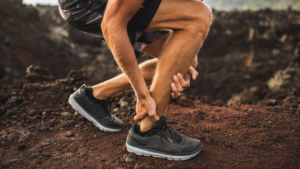
Why Is Achilles Tendon Pain So Persistent?
The Role of Muscle Dysfunction and Poor Blood Flow
The Achilles tendon is one of the thickest, most resilient tendons in the body, built to endure repetitive stress. Unlike other tissues, tendons generally lack rich blood circulation, meaning they are naturally more vulnerable to injuries and slower to heal. When a tendon becomes injured, the body’s healing mechanisms often fail to fully repair it, leading to chronic issues. Muscle dysfunction, particularly in the glutes and hamstrings, also plays a critical role. If these muscles aren’t functioning properly, they shift excessive strain onto the Achilles, making recovery even more challenging.
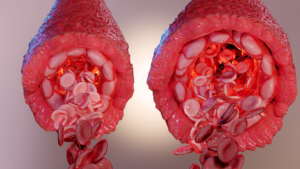
A Breakdown in the Body’s Kinetic Chain
Achilles pain isn’t always localized to the heel area alone; it’s often the result of imbalances throughout the leg and even the lower back. Commonly, a dysfunctional gluteus muscle can initiate a chain reaction. When you take shorter steps, your glutes disengage, leading to overcompensation by the hamstrings and calf muscles. This creates more stress on the Achilles tendon and plantar fascia, ultimately worsening your symptoms.
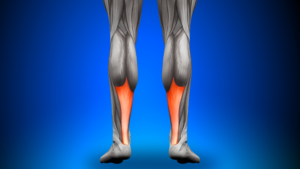
Common Missteps in Treating Achilles Pain
Stretching Alone Won’t Solve the Problem
Standard advice often includes stretching the calf and Achilles, but this can sometimes exacerbate the problem if not done correctly. Stretching a tendon that’s already under excessive load won’t restore its elasticity or heal the damaged fibers. Instead, it may further strain the surrounding muscles, causing even more pain.

Focusing Solely on the Achilles Tendon
The pain may be in the Achilles, but if treatment focuses solely on this area, underlying issues are ignored. By addressing muscle imbalances and dysfunction in the surrounding tissues, like the calves, glutes, and lower back, you provide comprehensive support to the tendon, easing the load it has to bear.
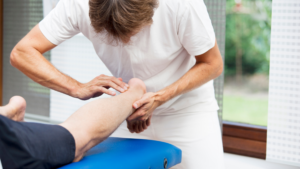
Effective Solutions for Lasting Relief
Start with a Structured Stretching Routine
Begin with gentle, structured stretching of the intrinsic foot muscles. This helps relax the fascia throughout the leg. Avoid stretching the glutes, as overstretching can worsen muscle imbalances. Instead, focus on passive stretching techniques for the Achilles, calf, and hamstrings.
Strengthening Muscles That Support the Achilles
A strengthening regimen focused on the glutes and quads rather than the calves can be highly beneficial. Strengthening these muscles helps distribute forces more evenly through the leg and offloads pressure from the Achilles tendon.
Consider Advanced Therapies like Shockwave Treatment
One of the most effective treatments for chronic Achilles tendinopathy is shockwave therapy, which promotes healing at the cellular level. Shockwave therapy targets scar tissue, stimulating blood flow and collagen production in the tendon. Over time, this treatment can improve tissue elasticity, reduce pain, and aid the body’s natural healing processes.
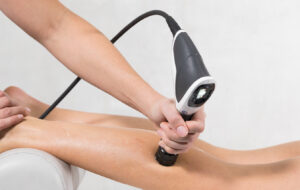
Why Prevention is Key
Living with chronic Achilles pain can be frustrating, but prevention is possible. Pay attention to your posture, walking, and running techniques, making sure to engage your glutes and core muscles with every step. By keeping a balanced gait and reducing repetitive strain, you can avoid overloading the Achilles tendon in the future.
Conclusion
Persistent Achilles pain often indicates a larger, more complex issue within your body’s kinetic chain. While stretching and rest provide short-term relief, a comprehensive approach focusing on muscle balance, strength, and targeted treatments like shockwave therapy can lead to real, lasting results. To find out if this approach is right for you, book a consultation with one of our healthcare providers at Unpain Clinic. We’ll help you uncover the root cause and guide you toward a pain-free future.
Uran Berisha,
B.Sc. PT, RMT
Shockwave Therapy Educator & Founder
Unpain Clinic & I Love Shockwave